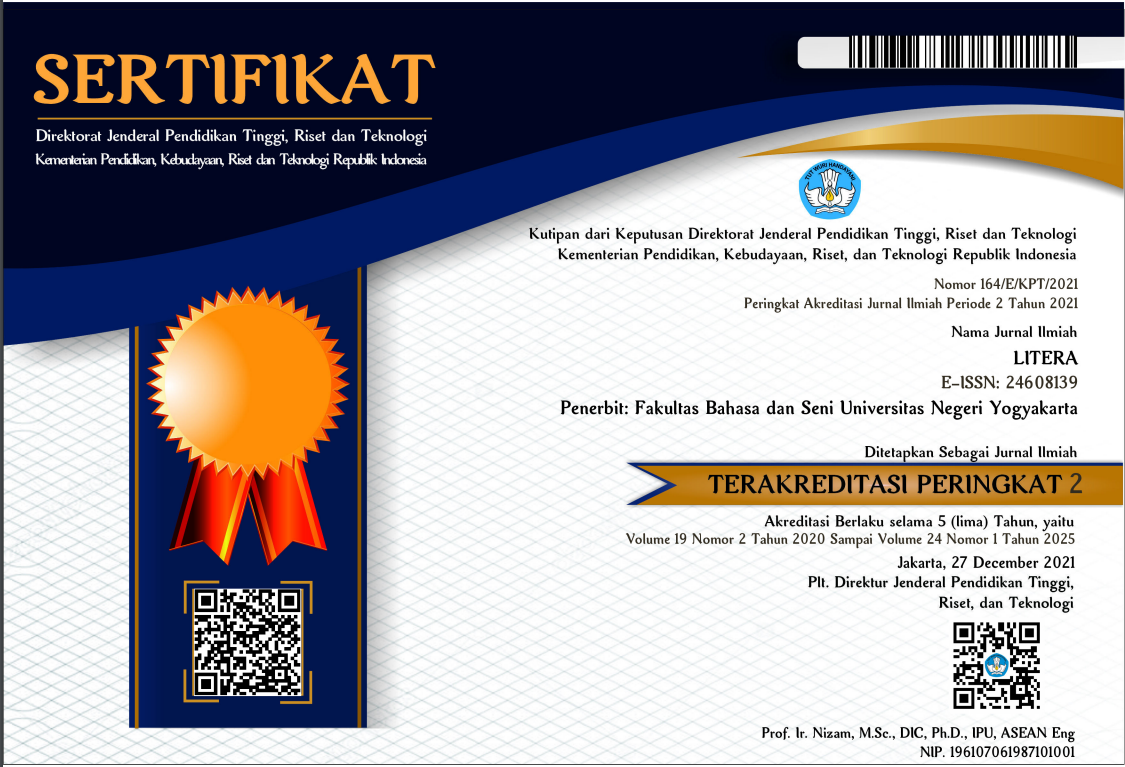KESIMETRISAN DALAM SISTEM DEMONSTRATIVA BAHASA MANDAILING
Abstract
This study aims to describe the demonstrative system in the Mandailing language.
The data were collected from native speakers in their daily communication. They were
analyzed by classifying demonstrative expressions based on Levinson’s theory and their
uses were described in accordance with field observations and informants’ explanation.
The results of the study are as follows. First, there are three types of relative distances
for object reference. The object reference in the three types of relative distances uses a
particular demonstrative expression. Second, a demonstrative expression for each relative
distance has the same base. This shows that there is a symmetric relationship among
demonstrative expressions. The object relatively close to the speaker is referred to by a
demonstrative expression using the element on. The object relatively distant from the
speaker but it is close to the addressee is referred to by a demonstrative expression using
the element i. The object relatively distant from the speaker and the addressee is referred
to by a demonstrative expression using the element odu.
Full Text:
PDFDOI: https://doi.org/10.21831/ltr.v14i1.4403
Refbacks
- There are currently no refbacks.
______________________
__________________________________________________________________________________________________
Litera Journal is published by the Faculty of Languages, Arts, and Culture Universitas Negeri Yogyakarta in collaboration with Himpunan Sarjana Kesusasteraan Indonesia (HISKI)
The International Journal of Linguistic, Literature, and Its Teaching at http://http://journal.uny.ac.id/index.php/litera/ is licensed under a Creative Commons Attribution-ShareAlike 4.0 International License
__________________________________________________________________________________________________















